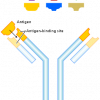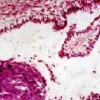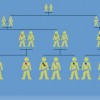Site Topics

Staying Positive in the Classroom
Jan 6th
I normally approach each lesson as though I am about to perform on stage. If I am feeling agitated or unhappy I force myself to push aside those feelings and show my excitement about the topic we are about to discuss. I have noticed that lately I have been stuck in a state of boredom when it comes to teaching. I have tried various tricks to get myself out of the rut. Thinking about the needs of the students and why I love teaching seems to help me the most.
I have to remind myself that the students I work with have a lot More >

Contemporary Carrie Buck?
Jan 6th
Recently, a 35-year-old woman sued a Boston-area hospital for performing a tubal ligation, thus sterilizing her, after the birth of her 9th child. Tessa Savicki states that she requested an IUD, a reversible form of birth control. Because two of her children are on welfare and she is unemployed, Tessa’s case has sparked passionate reactions and brings to mind the case of Carrie Buck.
The similarities are numerous. A poor woman sterilized against her wishes, judged by others to be unfit (just read the public comments on the news sites featuring Tessa’s story), and having children out of wedlock. There is More >

Antibody Diversity
Jan 4th
There are many different types of proteins that get made inside of human cells, including structure proteins, such as keratin and collagen, enzymes, and messenger proteins such as hormones. One large group that I forgot to mention, and that intrigues me the most, is the wide variety of different antibodies that get made in our blood cells. There are over a billion different types of antibodies that get made over the course of a lifetime, and each is able to identify antigens from foreign objects, such as viruses or bacteria, and elicits an immune response.
The amazing part of antibody production is the More >

Remembering Kim Peek
Dec 28th
Kim Peek (November 11, 1951 – December 19, 2009) was an inconceivably gifted savant. In today’s terms we might describe him as a living version of Google, but far better. He could of course, give you driving directions to any place in the country, and open the entire course of human history with names, dates, facts and figures to astonishing accuracy, but he was more than this, he was a person. He was a person doing things that no one would think a person could do, and that is the signature of savantism.
It is important to remember that savantism is More >

Genetic Codes for Skin and Lung Cancer have been Busted!
Dec 22nd
“Cancer is a leading cause of death worldwide and claims more than 7 million lives each year according to the World Health Organization.”
Cancer cells have mutations in their genes that render them unable to respond to signals that regulate cell division. These cells grow uncontrollably and can invade normal tissue in other locations of the body and cause disrupted functions of major organs. This is why cancer is so deadly.
A mutagen is a physical or chemical substance that can alter genetic material in cells. DNA can be damaged or changed (mutated). Cancer cells have changes in the genes themselves. These changes More >

Christmas Tree Science
Dec 21st
We have several holiday traditions at my house, which include baking cookies, decorating the house, and of course the tree. I have a love-hate relationship with my Christmas tree every year. Not a holiday season goes by without me cursing the tree and its insidious needles throughout the house. Oh, and don’t forget the ornaments that the dog just can’t keep out of her mouth. But the smell of the tree is all I need to get in the holiday spirit!
Interestingly enough, the Spruce, a very common Christmas tree species, has seven times more DNA than a human. How is that, you More >

Name that star!
Dec 14th
A good friend of mine recently gave birth to a beautiful baby girl. In searching for an appropriate gift, I came across a book by Michael Sherrod and Matthew Rayback called Bad Baby Names. The book trawls through 40 years of U.S. census data to catalog some of the most disastrous names bestowed upon American children. Examples include Acne Fountain, Emma Royd, Fanny Pack, Nice Carr, and Post Office.
Many hours of belly laughs later and I began to feel rather guilty. How terrible it must be to labor through life as Super Mann. How the schoolyard must cackle when Garage More >

Fighting Obesity…
Dec 10th
Today there is a huge concern about obesity. It is a medical condition characterized by excessive body fat accumulated to a point where it has become a health issue. It is associated with high blood pressure, type 2 diabetes, sleep apnea, and heart disease – ultimately leading to reduced life expectancy. Obesity is a condition that can be caused by inactivity, excessive consumption of calories, or a genetic predisposition.
Scientists have used genome-wide studies to define a relationship between body mass index and polymorphisms in the FTO gene (Fat Mass and Obesity Associated Gene). Recently, insights into the function of the More >

The Confusion About Adaptation
Dec 7th
One of the most difficult concepts to teach anyone is the relationship between evolution and adaptation. The majority of people I have worked with, both adults and children, are confused about this to some extent. Let’s first create a simple story to frame our discussion.
Once upon a time, in a forest with leaves and soil on the ground, there is a family of rabbits. Many animals live in this forest, including several predators for the rabbits. The mom and dad are both brown rabbits and most of their rabbit children are also brown. One of the children was born with More >

Lighting-Up Landmines
Dec 7th
Engineering students at Edinburgh University have created bacteria that can be used to detect landmines! The cheaply engineered bacteria can be mixed into a colorless fluid which would be sprayed over suspect soil. Chemicals that leak out of old landmines stimulate the bacteria to make a green protein, producing large patches of bright green where bacteria encounter explosive material.
According to the United Nations, between 15,000 and 20,000 people are injured or killed by landmines that litter more than 80 countries including Sudan, Somalia, Iraq, and Afghanistan. The bacteria would likely fail to identify those mines that do not leak, and would detect More >
